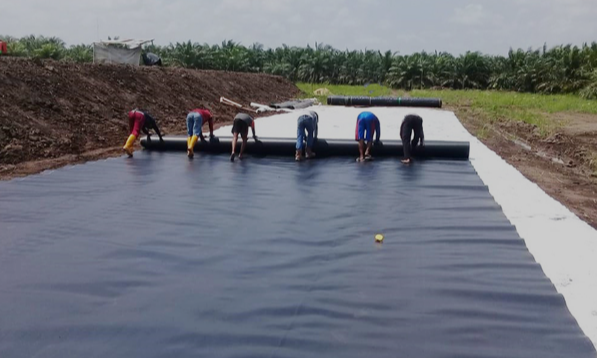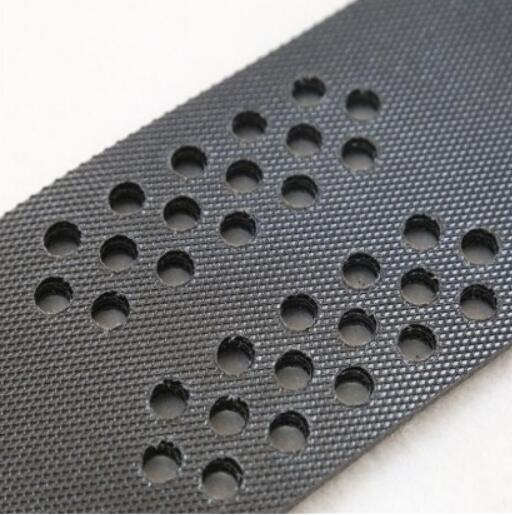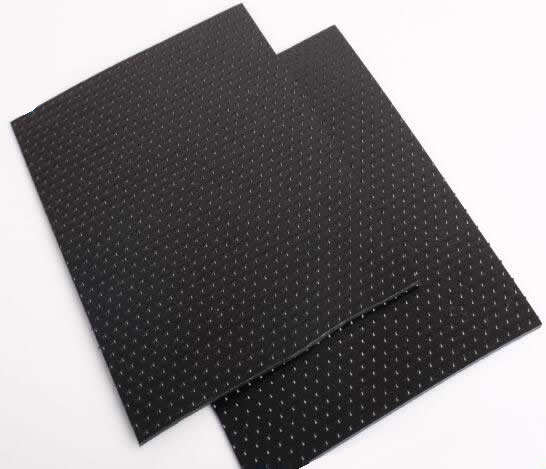- Understanding the Role of Geomembrane Liners in Waste Management
- Innovations in Geomembrane Liners for Water Management
- Geomembrane Liners: A Comprehensive Guide
- The Future of Geomembrane Liners in Civil Engineering
- Geomembrane Liners: Enhancing Landfill Stability
Manager:Alvin Wang
WhatsApp:+62 8983806051
Tel:+86 10-5797-1075
Email:steelwang@okorder.com
Address:3rd Floor, No.2 Building, No.1 Sanlihe Road
Which is better, HDPE geomembrane or UHMW?
Selecting the right material for engineering and industrial uses is a tough decision to make between hdpe Geomembrane and Ultra-High Molecular Weight Polyethylene (UHMW). Both of them have distinct features that are suitable in their own ways. This article will compare HDPE Geomembrane and UHMW by looking at their properties, applications, strengths, and weaknesses so as to determine which one is the best for different cases.

Understanding HDPE Geomembrane
Composition and Properties:
HDPE geomembranes are high density polyethylenes that are chemically resistant. Civil engineering, environmental protection and geotechnical purposes are their main uses. HDPE geomembranes possess high tensile strength, puncture resistance as well as tear resistance which makes it useful for containment such as landfill liners, pond liners among others.
Applications:
Due to their versatility and performance in various sectors HDPE geomembranes find use in many industries. These membranes are widely used whenever there is need for impermeability and environmental protection like containment of hazardous waste materials including industrial chemicals and liquids. In this regard, they offer reliable solutions aimed at preventing losses contaminations or damages to the environment when designing critical infrastructural projects.
Understanding UHMW
Composition and Properties:
Ultra-high molecular weight polyethylene (UHMW) is a type of polyethylene with very long chains providing excellent strength characteristics; an abrasion resistance rating only exceeded by diamond; therefore extremely effective lubrication can be provided by it for itself at very low wear rates. Its high impact strength renders it easily suited for sliding or abrasive wear applications. It finds wide-ranging use in industry where sliding friction or impact occurs such as wear strips, guide rails conveyor components.
Applications:
Industries that require durability low-friction coefficient materials with high resistance to wearing prefer UHMW plastic. Such applications may require materials capable of withstanding heavy operating conditions typical for massive equipment, conveyors, and material handling equipment. Due to its properties, UHMW can serve a wide range of industrial and commercial applications.
Strengths and Weaknesses
Strengths of HDPE Geomembrane:
- Excellent chemical resistance: This type of geomembrane is resistant to a huge variety of chemicals thus making it fit well in containing hazardous substances.
- Impermeability: HDPE geomembranes provide reliable fluid barrier protection, preventing leakage and contamination in containment applications.
- Cost-effectiveness: HDPE geomembranes provide an affordable solution for engineering projects requiring their impermeable liners that care for the environment.
Weaknesses of HDPE Geomembrane:
- Susceptibility to UV degradation: Owing to its exposure to ultraviolet rays over time HDPE geomembranes degrade unless they are provided with additional stabilization measures against UV radiation.
- Limited wear resistance: In cases where there are abrasive materials or heavy machinery involved, HDPE geomembranes may become susceptible to wear and abrasion.
Strengths of UHMW:
- Exceptional wear resistance: UHMW exhibits outstanding resistance to abrasion, making it suitable for applications where sliding, rubbing, or abrasive wear occur.
- High impact strength: UHMW is known for its high impact resistance, making it suitable for applications where impact or shock loading is a concern.
- Low friction properties: Its low coefficient of friction enables this polymer to be self-lubricating hence reducing the effects of friction on slide surfaces as well as moving parts.
Weaknesses of UHMW:
- Limited chemical resistance: Although resistant to many chemicals; this might not be so effective in case there exposure involves certain solvents or corrosive substances such as those used in etching semiconductors etc.,
- Higher cost: When compared to HDPE, UHMW has a higher cost especially in large scale applications that require huge amounts of materials.
Considerations for Material Selection
Application Requirements:
Which one is better between HDPE geomembrane and UHMW depends on what the application requires. Where there is a need for resistance to chemicals and impeccable impermeability in containment applications, HDPE geomembranes are preferred over UHMW that is used in applications requiring wear resistance, impact strength and low friction.
Cost Considerations:
The cost of material is one aspect to check when making a choice between HDPE geomembrane and UHMW. Inexpensive HDPE geomembranes are an option for projects with little or tight budgets while UHMW may be called for in situations where superior performance plus durability matters most even though it has higher initial costs.
Environmental Factors:
Upon deciding whether to use either HDPE geomembrane or UHMW, certain environmental factors should be put into consideration; such as ultraviolet light exposure, temperature extremes and chemical exposure. While outdoor applications of HDPE geomembranes may require additional UV stabilization measures, ones made of UHMW have been observed to perform better under various environmental conditions.

Conclusion
In conclusion, both HDPE geomembrane and UHMW have distinct properties and benefits which make them ideal for various engineering as well as industrial applications. It all depends on what the specific requirements are concerning mechanical properties like wear resistance, chemical resistance, physical properties including tensile modulus and environmental issues like UV exposure among others (Treybal et al., 2008). By considering each material’s strengths, weaknesses along with other issues related to their uses in different projects, stakeholders can be able to arrive at informed decisions which will help them choose the right material for their respective applications.
-
2024-12-05Geomembrane Liners: A Comprehensive Guide






